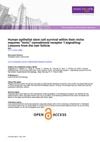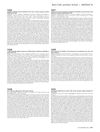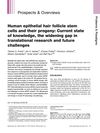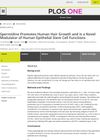Search
forLearn
5 / 65 resultslearn Hair Multiplication
extract, clone, and reinsert your own hair cells
learn Osteopontin
signaling protein that, when suppressed, may grow hair by reducing inflammation and stem cell loss
learn Overview
learn Beta Polypeptide
Research
5 / 1000+ results
research Human Epithelial Stem Cell Survival Within Their Niche Requires Tonic Cannabinoid Receptor 1 Signaling—Lessons From the Hair Follicle
Cannabinoid receptor-1 signaling is essential for the survival and growth of human hair follicle stem cells.

research Stem Cells and Their Niches
The document concludes that stem cells and their environments are crucial for skin and hair health and have potential for medical treatments.

research Human Epithelial Hair Follicle Stem Cells and Their Progeny: Current State of Knowledge, the Widening Gap in Translational Research and Future Challenges
We need more research to better understand human hair follicle stem cells for improved treatments for hair loss and skin cancer.

research Hair Follicle Stem Cells: Walking the Maze
Hair follicle stem cells are key for hair and skin regeneration, can be reprogrammed, and have potential therapeutic uses, but also carry a risk of cancer.

research Spermidine Promotes Human Hair Growth and Is a Novel Modulator of Human Epithelial Stem Cell Functions
Spermidine may help reduce hair loss and deserves further testing as a treatment.
Community Join
5 / 1000+ results
community Compressed part of research of theory of androgenic/anabolitic balance. AGA h-responders analytic. Theory of physio-metabolitic method of anti AGA treatment
The treatment for androgenetic alopecia involves using finasteride and minoxidil with intense exercise and cold exposure to boost metabolism and reduce androgenic effects, potentially leading to hair regrowth. This approach may activate biological pathways for improved hair and overall health.

community If You Have DUPA, PLEASE READ THIS: Everyone Should Be Scalp Biopsied
Scalp biopsies are crucial for diagnosing hair loss conditions like Diffuse Unpatterned Alopecia (DUPA) and retrograde hair loss, as treatments like finasteride and dutasteride may not be effective if other conditions are present. Combining PPAR-GAMMA agonists with retinoids could improve treatments for conditions like Lichen Planopilaris.
community TWIST-1 and the cure: Is it really that easy?
TWIST-1 gene's role in hair loss and potential as a treatment target. Inhibiting TWIST-1 may prolong hair growth and reduce hair follicle sensitivity to DHT.
community Finasteride only reduces scalp DHT by ~40%. Why does it work?
How Finasteride and Dutasteride help reduce hair loss by reducing the amount of DHT in scalp areas, as well as discussing factors such as sensitivity to DHT, 5α-reductase expression in different parts of the hair follicle, and scalp tension.
community Unpopular Opinion: hair cloning kind of sucks as a potential future cure.
Hair cloning is seen as a distant and potentially less relevant solution for hair loss due to its high cost, invasiveness, and the advancement of other treatments like Minoxidil and finasteride. Many believe that by the time hair cloning becomes viable, other less invasive and more effective treatments will be available.